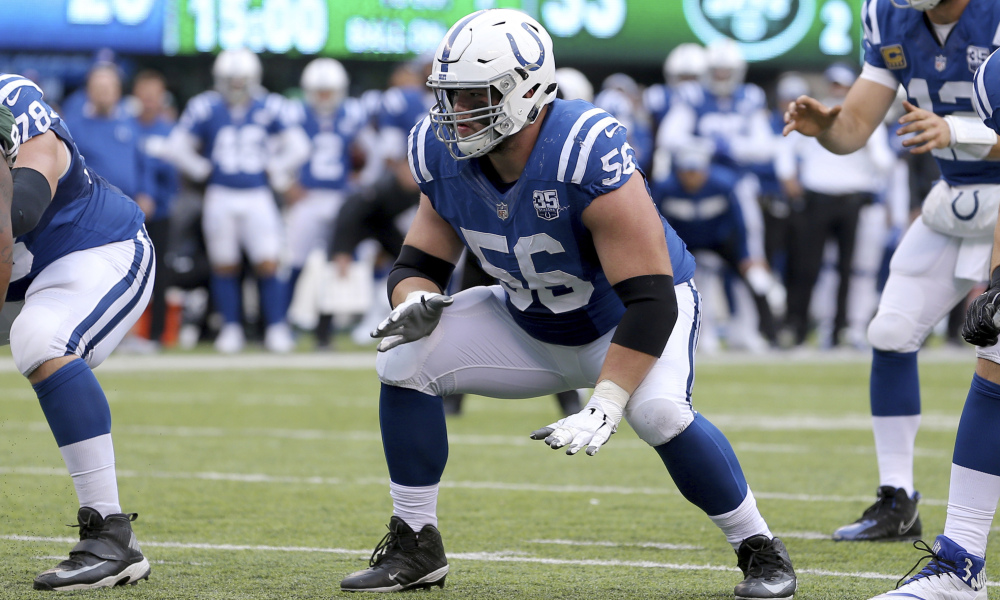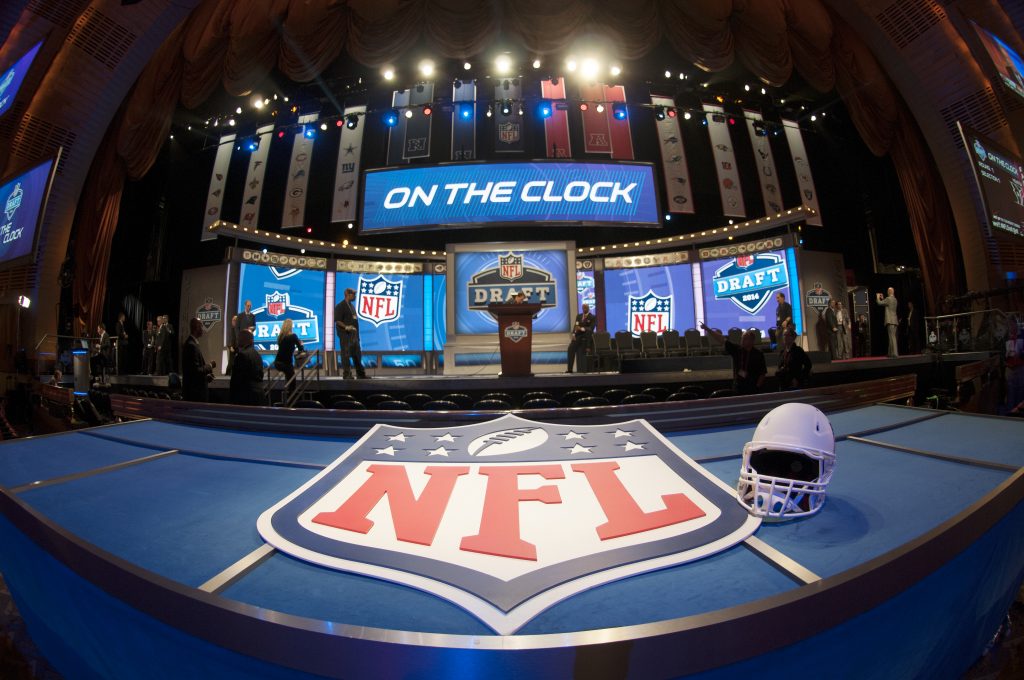The Contentious One

Photo Credit: Brad Penner/AP Images for Panini
In the lead up to the draft and as I did my evaluations, I was overly critical of Quenton Nelson – I thought his balance issues had the potential to be a bigger detriment to his play than they were and so graded him lower than he likely deserved – I’m happy to admit that. What I will continue to insist, however, is that him being named an All-Pro is tenuous and that he was not worth the sixth overall pick.
There is a middle ground between the mid-round gamble that I called him and the sixth overall pick – perhaps his value lies somewhere in between.
In terms of the All-Pro designation, I would point out that (via the Pro Football Focus video that’s below), two of the fifty voters didn’t even know which position David DeCastro plays and that the vast majority will not have spent any significant amount of time watching the vast majority of offensive linemen. If this sounds harsh, I would remind you that a year ago Daryl Williams was named a second-team All-Pro, despite the Panthers feeling the need to play Ed Dickson as an additional offensive lineman to help him on some passing plays. So how do these voters make their minds?
The only people who really claim to watch every snap are PFF – it is therefore not unreasonable for voters who don’t watch loads of offensive line tape to turn to PFF for an idea on who has played well, either directly or via the NFL media at large – this is likely how Daryl Williams ended up and All-Pro. So how do PFF make their evaluations?
According to PFF themselves, they grade offensive linemen based on how well they execute the block they think they have been assigned, the issue with this is that it fails to take into account how difficult and how valuable this block is. Offensive line coaches are not complete idiots, they know who are their best and worst players are and they sensibly tend to give their worst players the easiest responsibilities – where they are aided by a double team for example – leading to their PFF grades likely being elevated.
A similar issue arises when comparing players in schemes which put a lot of pressure on the offensive line with those in schemes which seek to do the opposite – this is most relevant to Nelson. Through the first month or so of the season, Nelson was grading poorly with PFF and so were the Colts as a whole, ranking outside of the top 20 offensive lines by PFF – they also went 1-5 to start the year. Then they changed their scheme to take pressure off the offensive line, moving to one with fewer down-blocks in favor of a more zone-based rushing game along with more run-fakes and quick-hitting concepts in the passing game. The effect was immediate, as having conceded 10 sacks through the first five games, they conceded just eight in the next 11 – 61 pressures in the first five games turned into 37 the next five.
PFF’s grades responded in kind, with the whole of the Colts offensive line seeing improvement, and Nelson rising from outside the top 60 guards to be the fourth overall by the end of the season. Similarly, while the Colts hoped that Ryan Kelly would improve in year two, going from the worst center in PFF’s grading to the 11th best was beyond any reasonably expectation. That is not to say that Nelson has been bad – that’s absolutely untrue, he has been very good and I clearly graded him too poorly – but the praise that is currently being thrown his way is likely somewhat over-eager, and that it is probably not a great look for a guard taken sixth overall to need a scheme change to perform at a high level – you draft a guard that high to allow you to run an offensive-line focused scheme in the mold of the LA Rams.
Again, I was wrong about Nelson, but I am far from ready to call his selection a success.
It is hard to pass a definitive judgment on a draft board with terms such as ‘good’ or ‘bad’, but while our evaluations were far from perfect I would claim that they err more on the side of good – certainly when the limitations of our methods are taken into account.
While (obviously) we think you should utilize our draft coverage, it is worth checking out some other sites as well, as there will unquestionably be those with different viewpoints to us – as well as those who are able to provide information and tools we simply aren’t able to. When it comes to draft information, the more you can gather, the better – Walter Football offer some of the most in-depth mock drafts around, Draft Scout offer arguably the most complete database of draft-eligible players, Lance Zierlein‘s analysis is probably worth reading even if his draft grades don’t always match up and Fanspeak‘s draft simulator is worth a go if you want to see how you’d get on as the Panthers’ GM.
Our full coverage begins on January 27th – this year, in addition to our big boards, mock drafts and individual breakdowns we had last year, we’re adding a podcast and some video evidence to get you through the long three month gap between football and the draft.
We hope you’ll come with us.



